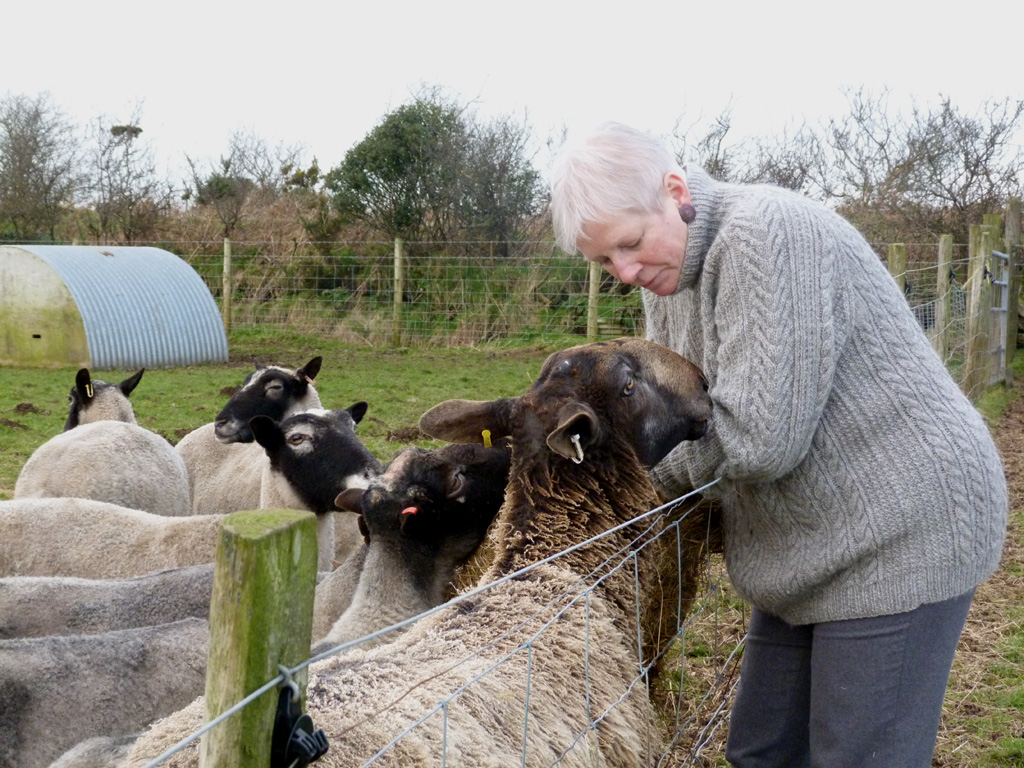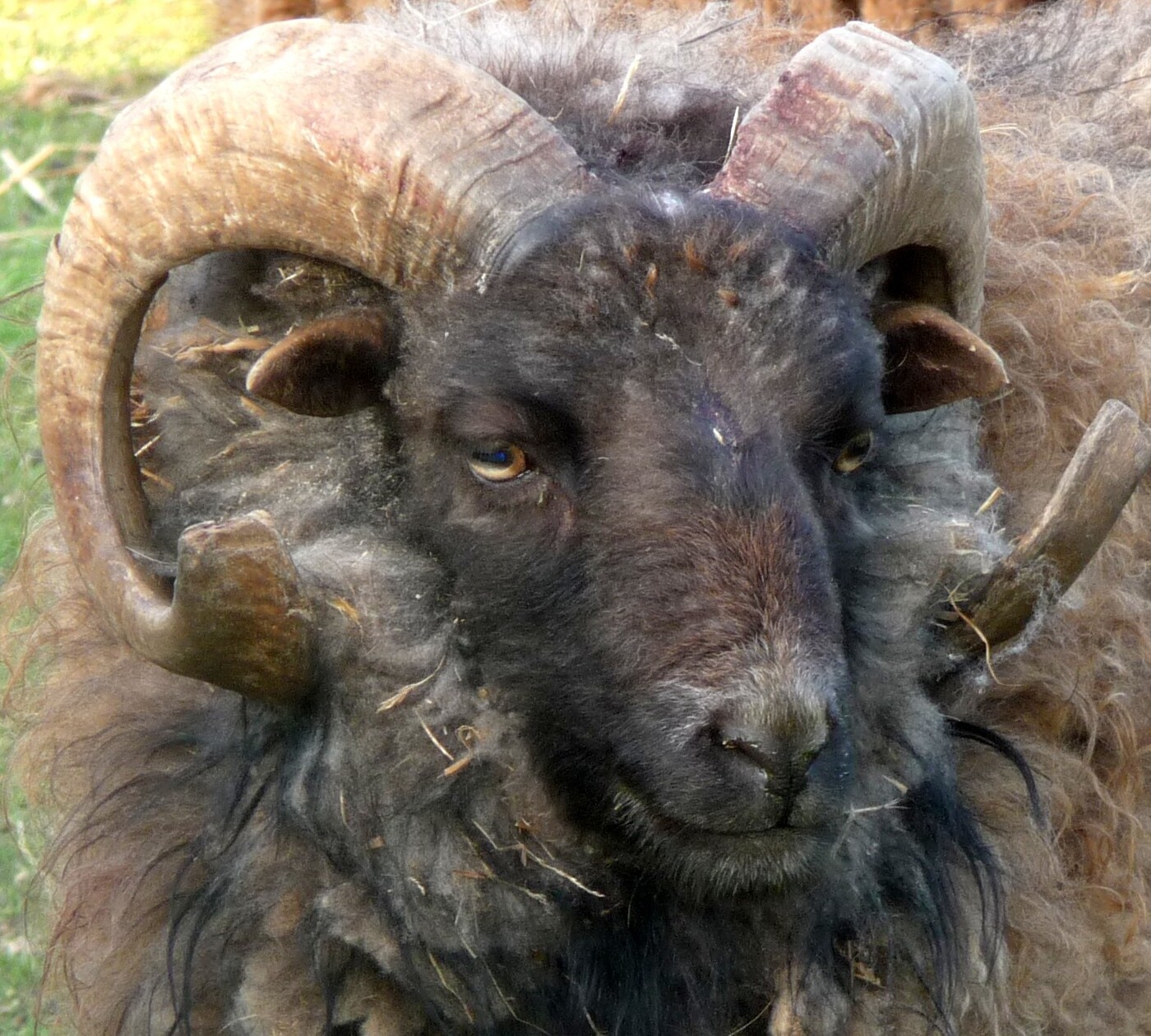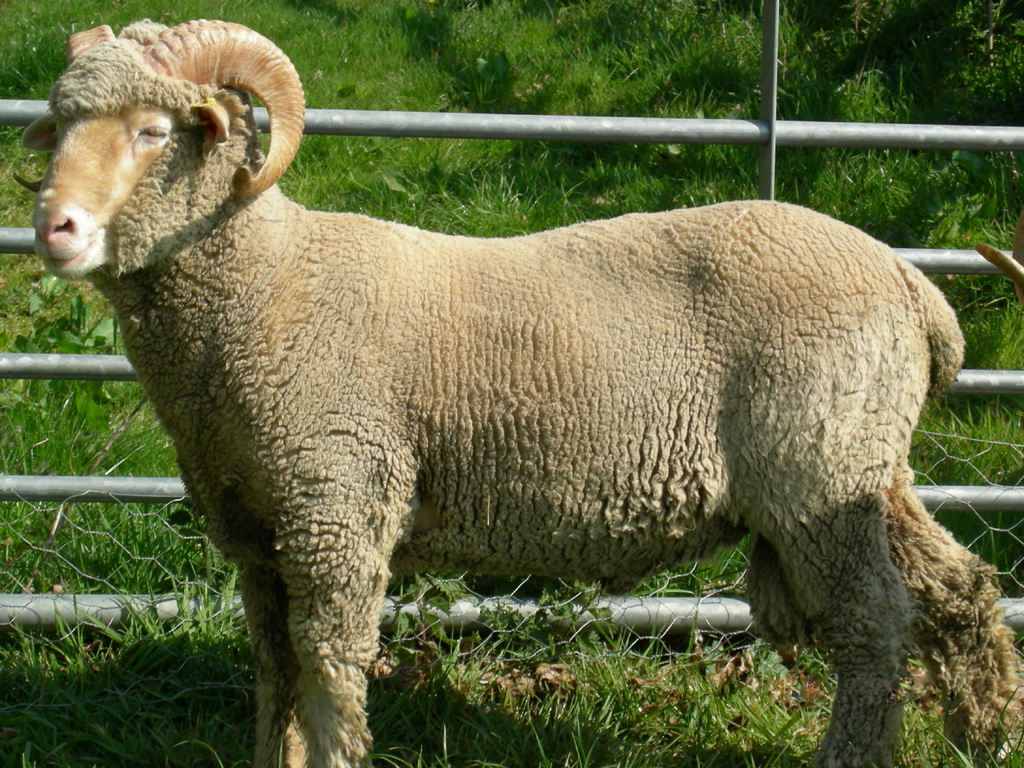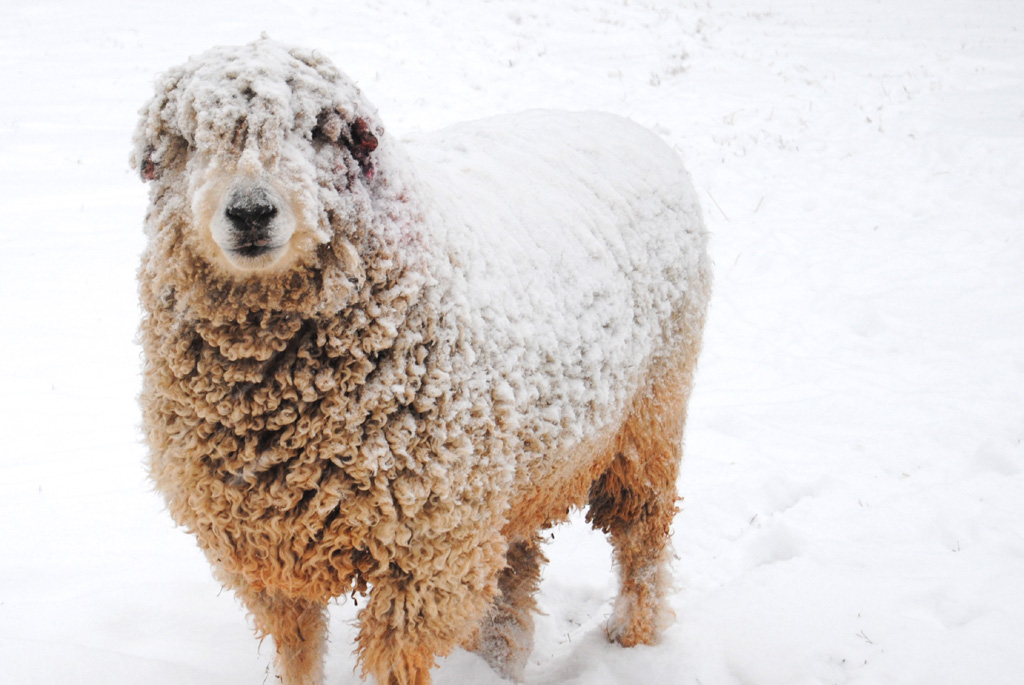As you know, these first days of WOVEMBER are themed around Growing WOOL! Wool has its very foundations in the work of shepherds. This is an opportunity to recognise and celebrate the amazing work of WOOLGROWERS!
Sue Blacker who runs The Natural Fibre Company with her flock of Gotland Sheep, photo © Douglas Bence
Generally at this time of year the rams are being put with the ewes. In Cumbria, there is talk of the ewes “holding to the tup”. It all means the same thing: sheep funtimes!
[youtube http://www.youtube.com/watch?v=RIDSixrW9VI&w=560&h=315]
It’s obvious that without those funtimes THERE WOULD BE NO WOOL, but it seems that how a shepherd matches their sheep is crucial to shaping the quality and character of the wool they produce. Barbara Parry explains this in her wonderful piece “The Ram is half the Sweater“:
When making my breeding groups, I’m working to enhance the best qualities of both ewes and ram.
Parsley’s offspring carry his legacy of his baby fine fiber, with crimp so fine, you almost need a magnifying glass to count it. Like mini-marshmallows, his lambs bear soft, dense fleeces with high yield. I’ll pair him with ewes of more open fleeces in hopes of increasing wool productivity.
Teaberry’s lambs often have their dad’s big, dark dreamy eyes and movie-star good looks. If I’m lucky they will also inherit the luminous white fleece, dynamic crimp and super long staple length of their sire.
Ultimately my hope is that the pairing of excellent ewes with rams who will enhance wool traits will result in an awesome bunch of lambs. They will in turn carry forward the most desirable yarn-defining characteristics. That’s the goal. In yarn farming the ram is not only half the flock, but also half the sweater.
– Barbara Parry, The Ram is Half The Sweater, Twist Collective
Last year during Wovember Diane Falck – The Spinning Shepherd – also alluded to the special place of the ram in the shepherd’s schemes, musing that wool begins in “the knowing sparkle in the eye of a ram”:
The special properties of sheep’s wool ensures it a place of honor among textile fibers.
But where does this exquisite fiber actually come from ?
What is the actual source of all those woolly balls of yarn that are used to create our lovely jumpers, scarves, and hats ?
For many a knitter, it all begins with a trip to the local yarn shop.
For the spinner, it’s a freshly shorn fleece.
But for the shepherd, it begins on a crisp autumn day.
With a cool breeze blowing… leaves crunching underfoot…
and the knowing sparkle in the eye of a ram…
– Diane Falck, WOVEMBER 2011
Dagobert – a fine Ouessant Ram, © Diane Falck
Also in this vein, Lesley Prior – who many of you might know from the excellent Devon Fine Fibres blog – talks about “Ram gold“, i.e. sheep semen stored “in the (semen) bank” to preserve the precious genetic qualities specific to her Bowmont flock:
“Ram gold” is sheep semen, in this case from two of my very best rams which will be frozen and preserved for future use in my sheep flock. It’s a very expensive business but for me with my precious flock of Bowmonts, its a no-brainer. I am doing my best to preserve and develop the work of the Macaulay Institute on these sheep and the only way to ensure their precious genetics do not vanish in the next Foot And Mouth epidemic is to take this rather clinical and cold approach to the joys of reproduction!
– Lesley Prior, Devon Fine Fibres
Bowmont Yearling Ram, photo © Lesley Prior
Yet as Barbara writes, The Ram is Half the Sweater. After the ewes have held to the ram, there is still much work to be done to get a WHOLE sweater! Over the next few days we will hear from many experienced and expressive woolgrowers – and also appreciators of woolgrowing- about the shepherding activities that lie at the heart of wool.
Luckily, shepherds are as varied as wool types, so there will be many voices and styles to this sheepiest phase of WOVEMBER 2012!
WOVEMBER hopes that you will enjoy this stage in “Closing the Gap”, and that you yourself may be inspired to wear more wool, enter our photo contest with your images of Growing Wool, sign our petition, or find some other way of celebrating what real wool is and where it comes from!
Our last sheep photo for the day is Ernie – a much loved wether from the Juniper Moon Farm flock.
Ernie, Juniper Moon Farm flock, © Susan Gibbs
Unlike the other boys in this post, Ernie was not kept for his WOOL-improving genes; he was a Cotswold sheep whom Susan Gibbs bottle fed as a tiny lamb. In fact, Ernie was one of Susie’s very first sheep. She didn’t want him to go for meat, and his fleece wasn’t quite right for Juniper Moon’s Fibre-producing purposes. He became – in Susan’s own words – a very expensive pet. WOVEMBER reckons, though, that as well as picking the right genes from the right rams to make the right wool, you need a brave heart to be a shepherd. Lesley touches on that in this gorgeous post, and this moving requiem for Ernie is a powerful reminder of the bond between shepherds and the animals they watch over. Surely that love and that bond are part of the sweater too, and also part of what makes wool WOOL?
Afterall, you don’t often read of folk crying over polyester.



